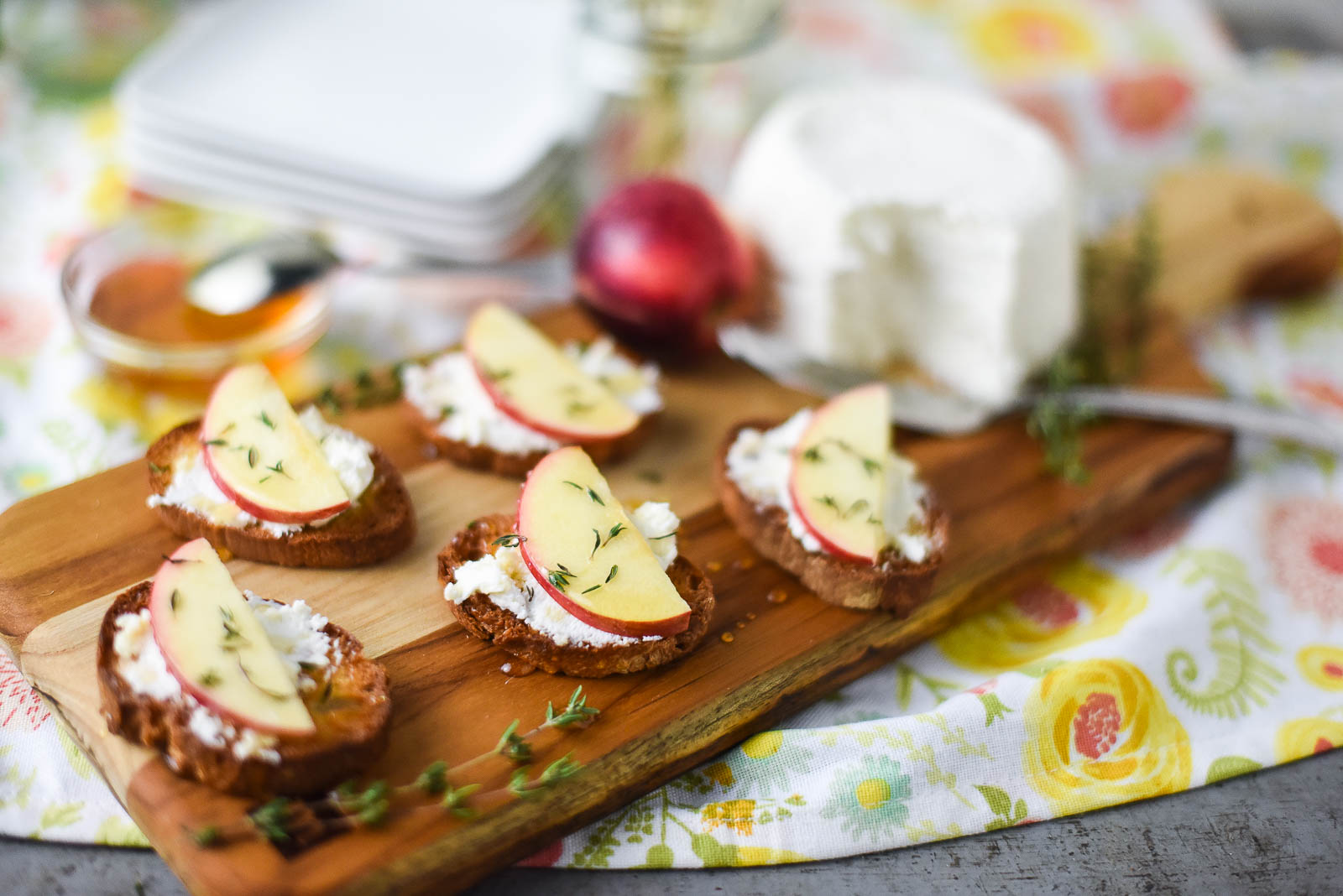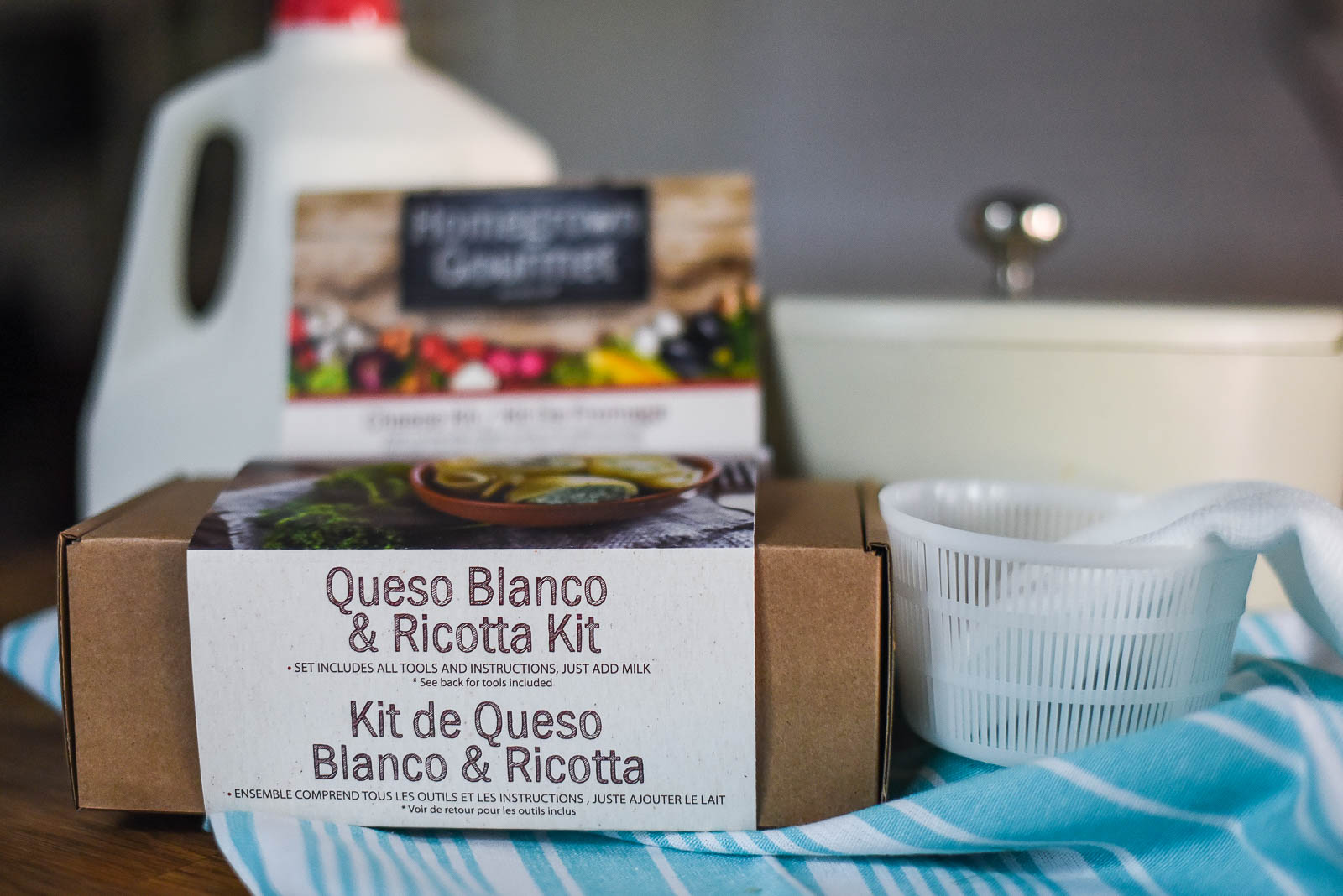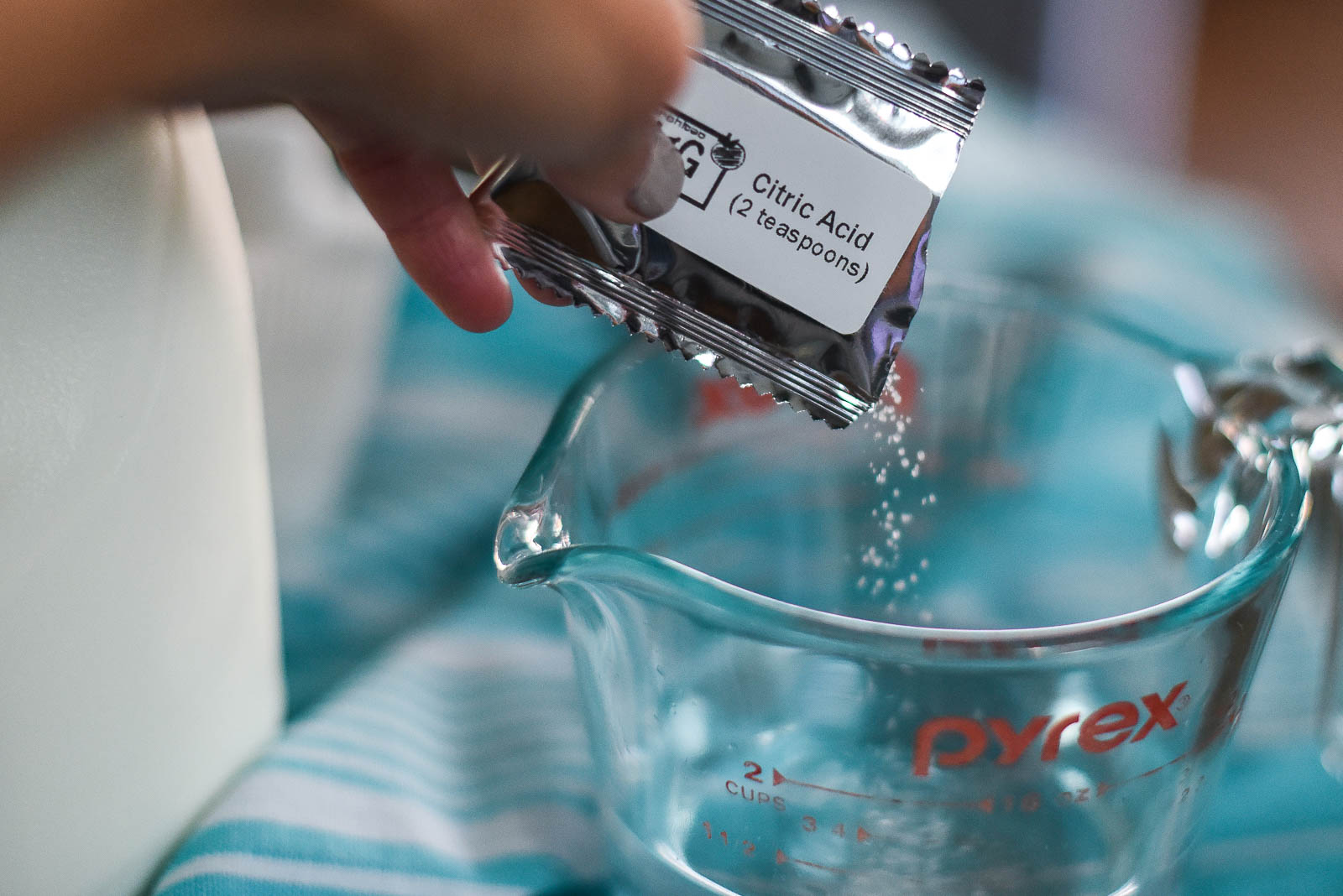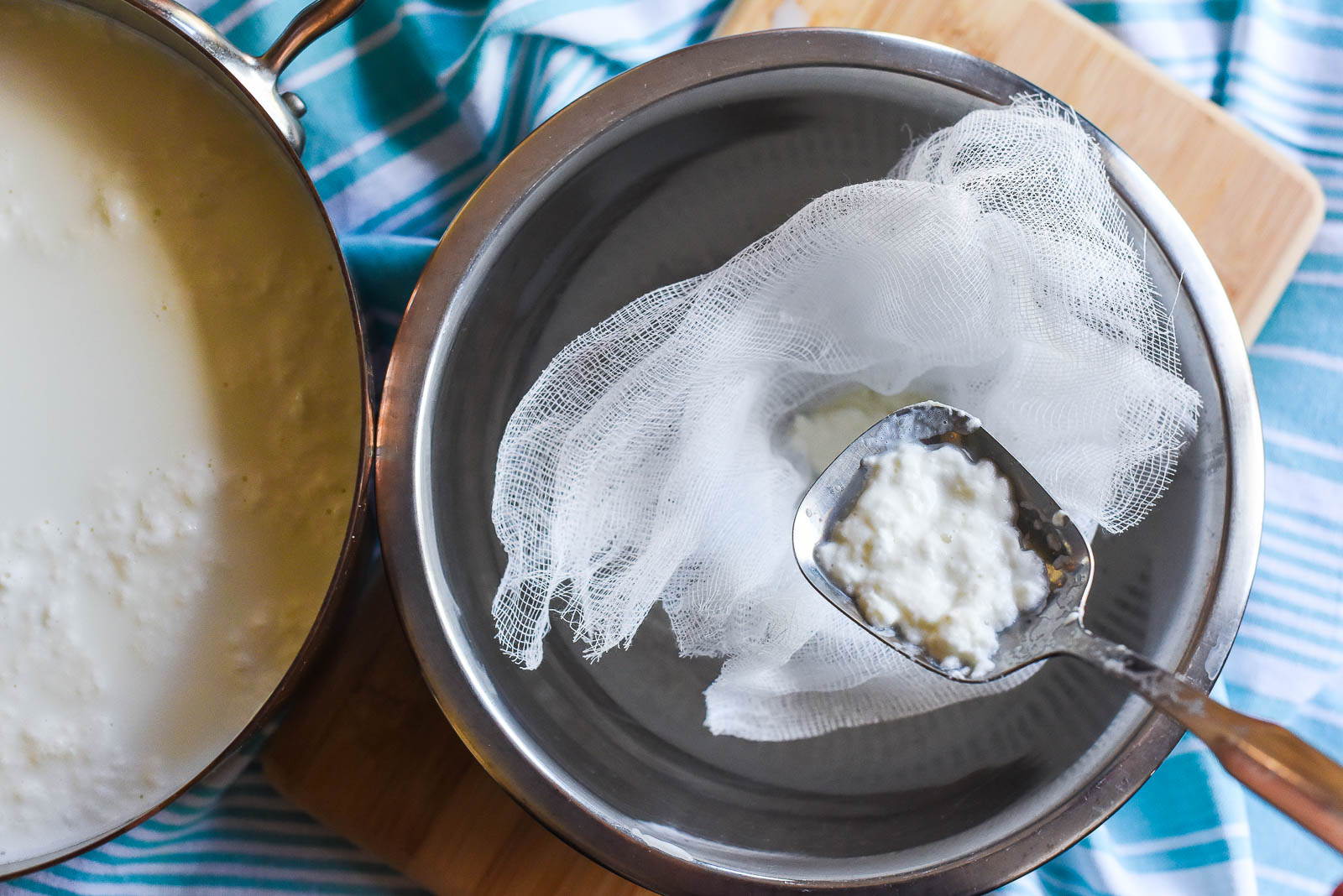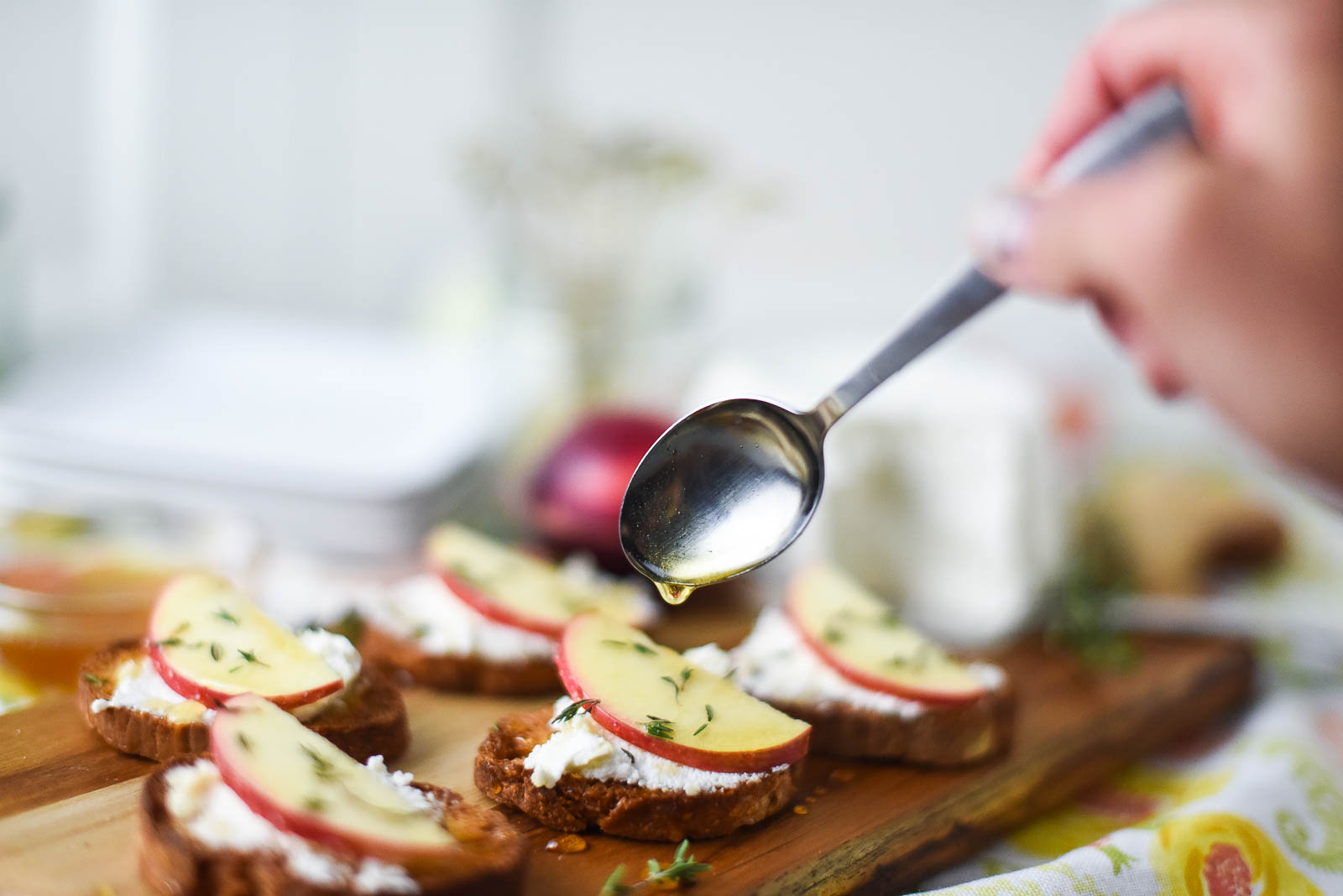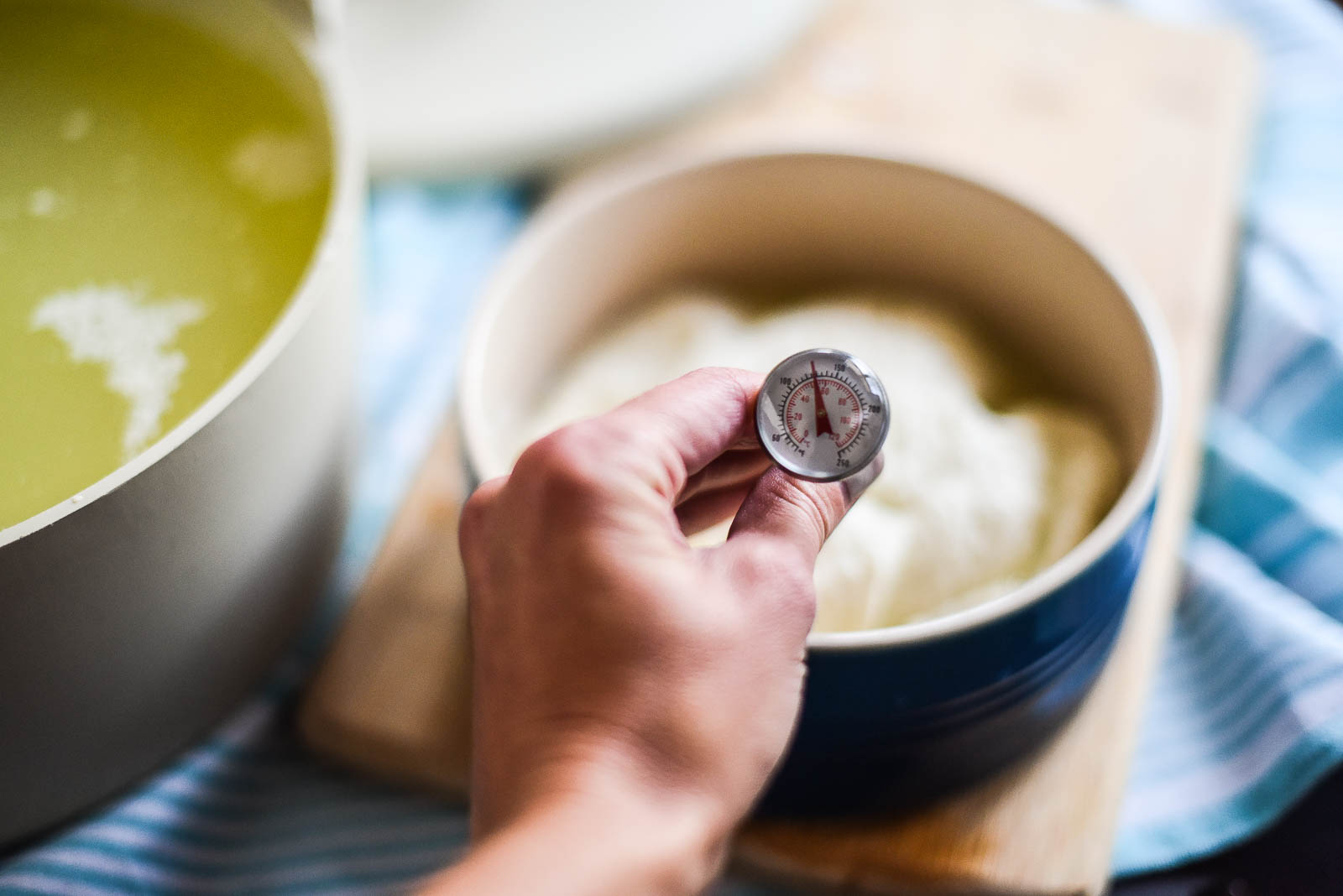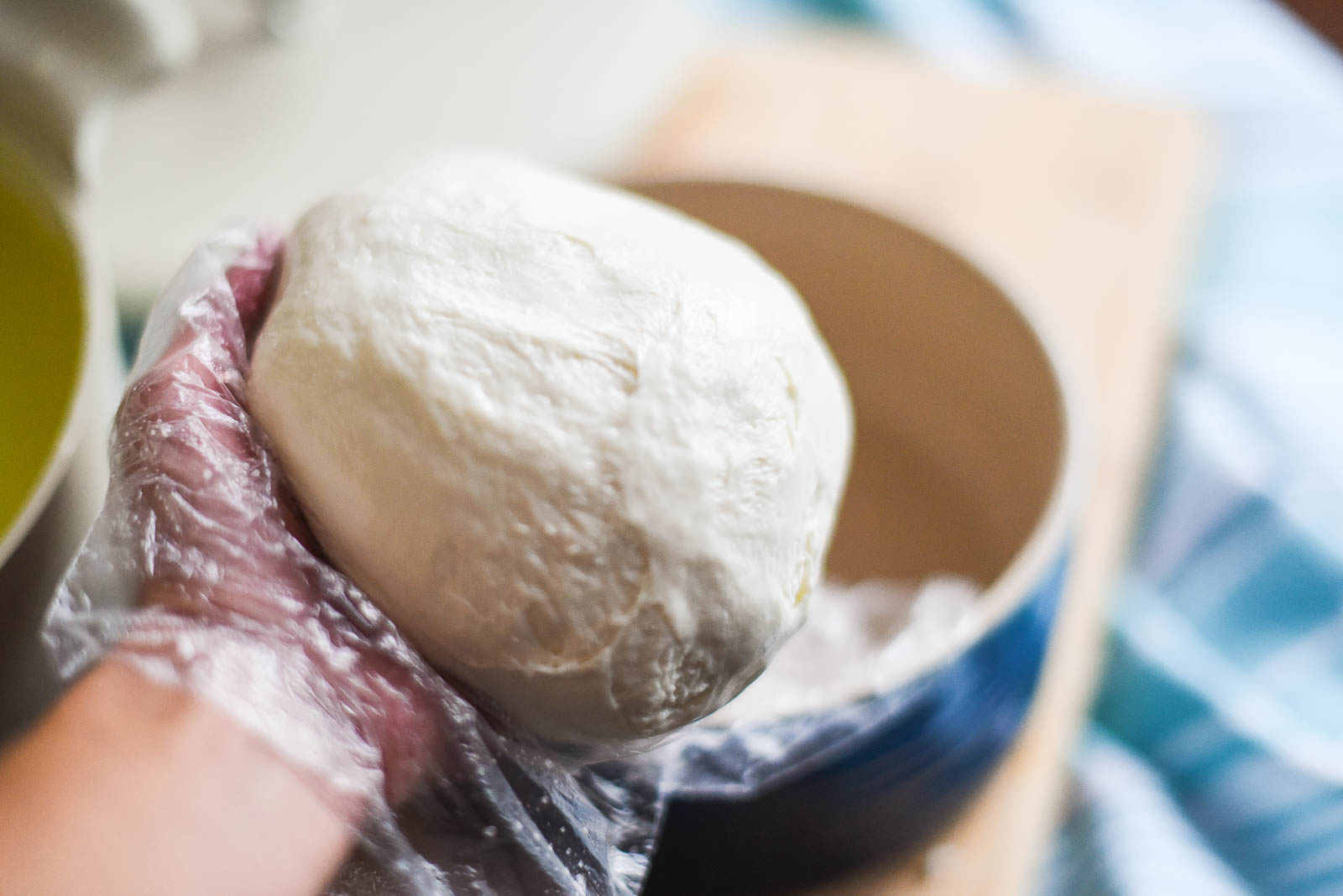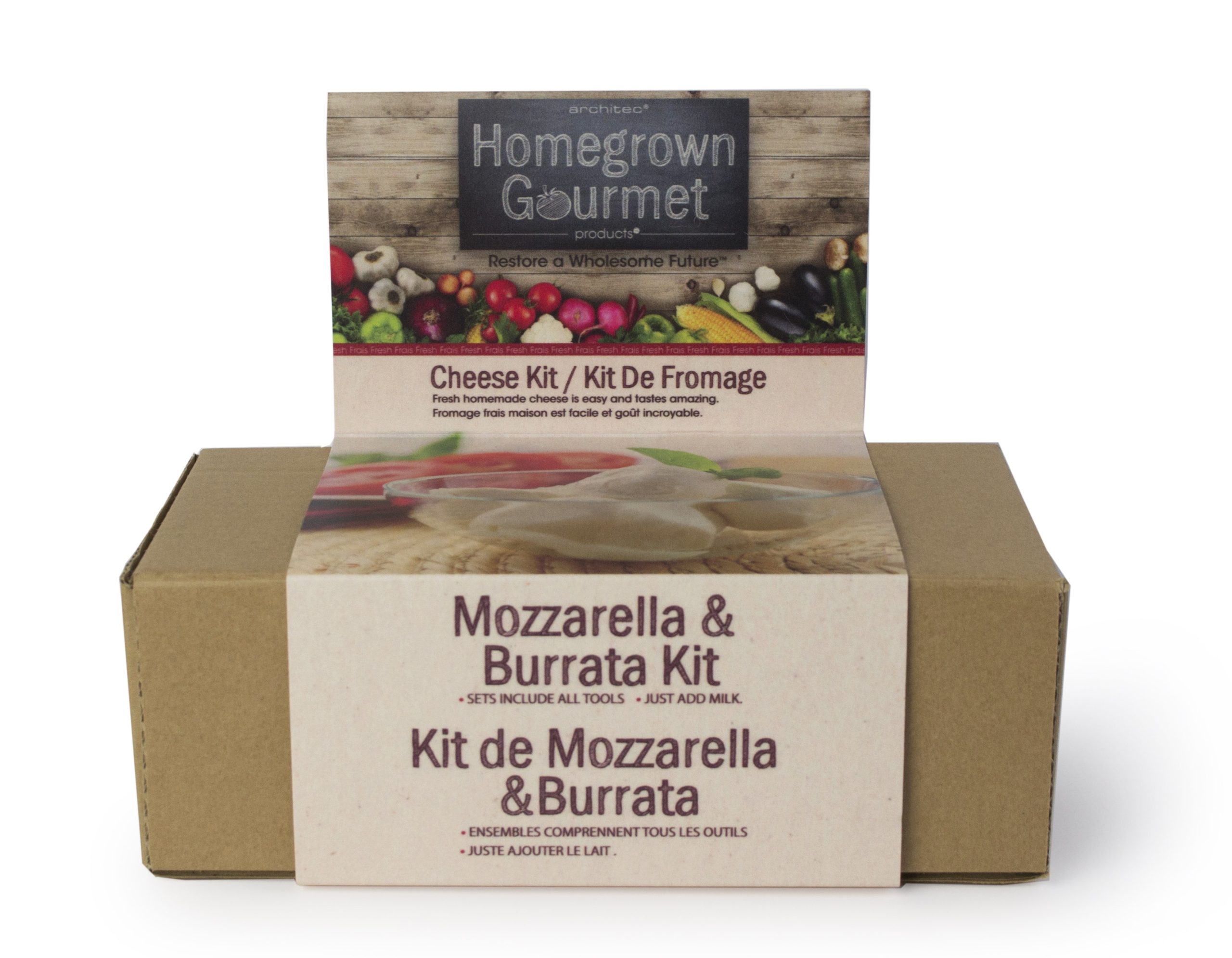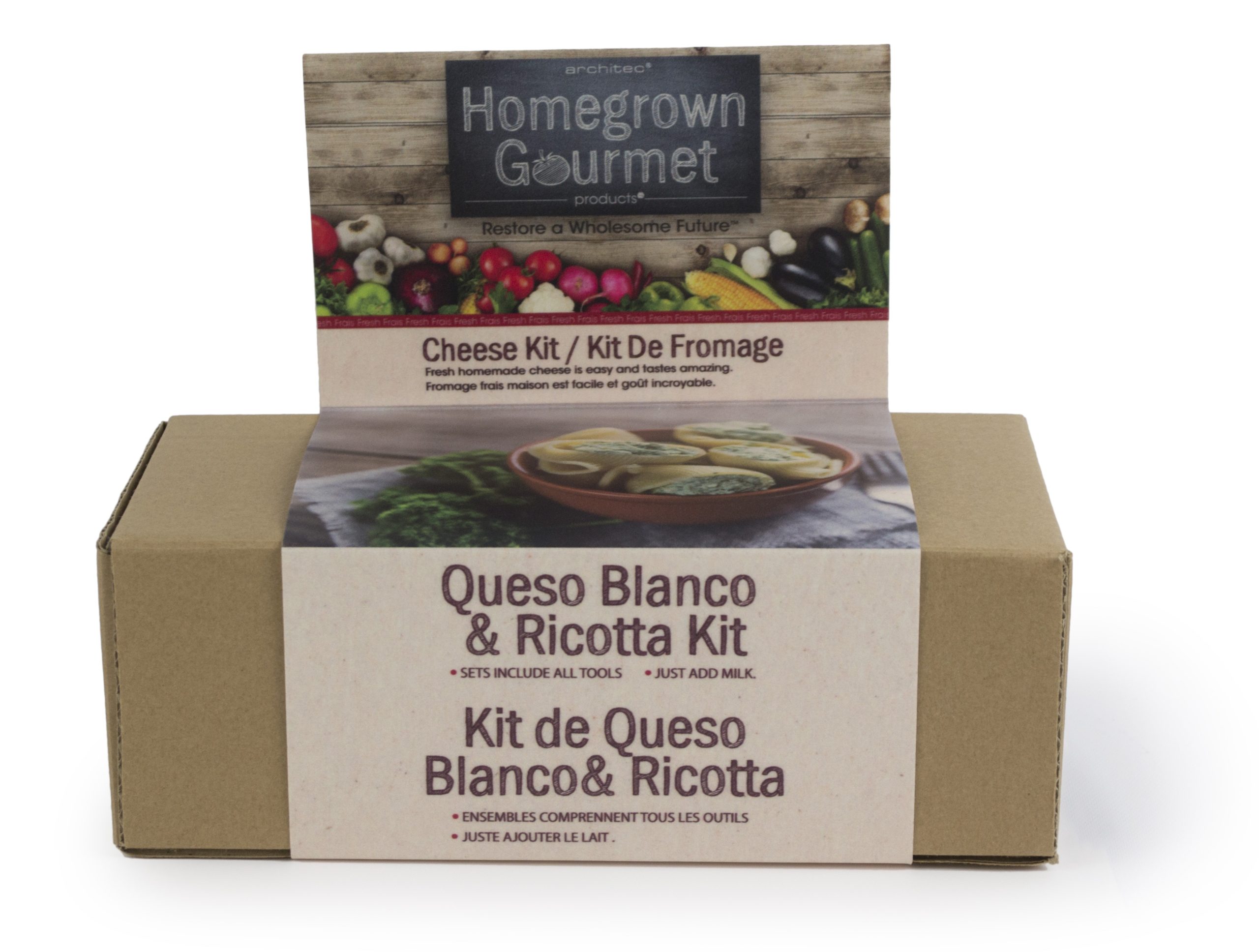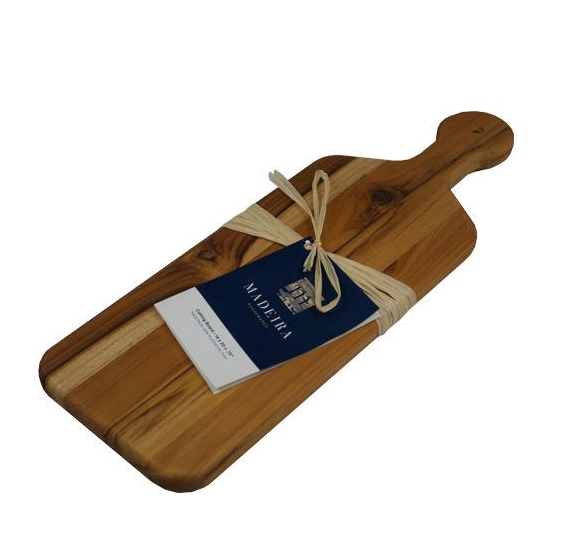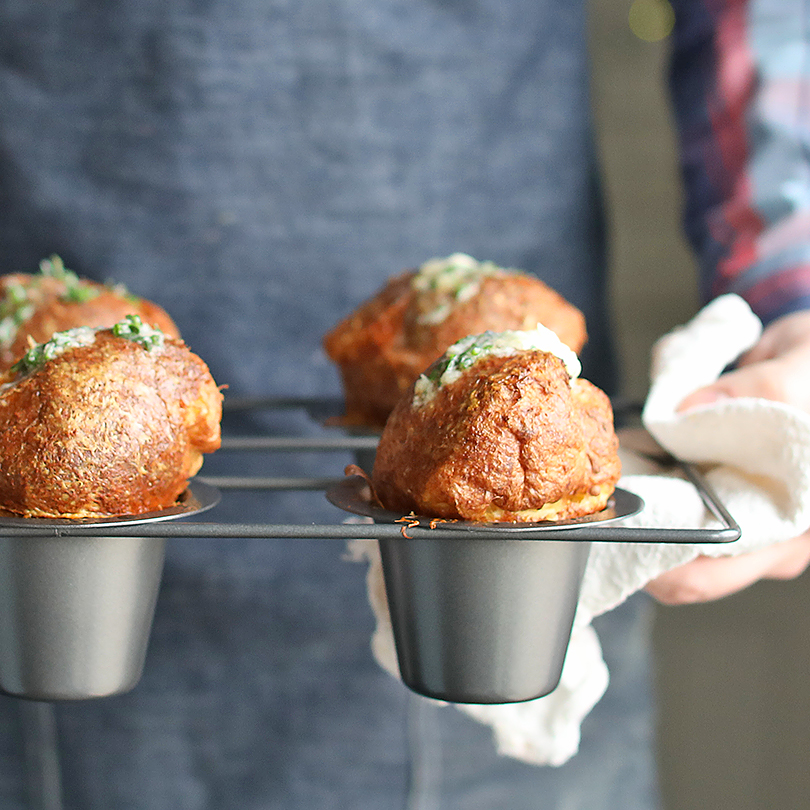
Turn a gallon of milk into creamy fresh mozzarella or buttery ricotta cheese in less than an hour.
Imagine how impressed your guests will be when met with this gorgeous cheeseboard. Now imagine their faces when you tell them you made the cheeses from scratch.
As intimidating as it sounds, cheesemaking can actually be quite simple. Even better, delicious ricotta and addictive fresh mozzarella (two of my personal favorites) are among the easiest cheeses to make at home.
All you need to get started with either is a gallon of milk, some citric acid and, for the mozzarella, a tablet of rennet. If those last two ingredients sound scary, no need to despair, they’re both available, along with a few essential tools and step-by-step instructions, in kit form. All you need to add is a gallon of milk. Let‘s get started, shall we?
Homemade Ricotta
To make ricotta, start by dissolving 2 teaspoons of citric acid in one cup of water. Next, pour the entire gallon of milk into a large pot or Dutch oven set over medium heat. Gradually warm the milk until a thermometer reads 200¬∞F. Do not let it boil. Add the citric acid and stir gently. Let the mixture sit for 10 until the milk separates into clumps of milk white curds and thin, watery, yellow-colored whey — dip your slotted spoon into the mix to check.
Set the strainer in a bowl and line the strainer with cheesecloth. Scoop the big curds out of the pot with a slotted spoon and transfer them to the strainer. Pour the remaining curds and the whey through the strainer. Allow the curds to drain for 10 to 60 minutes, depending on how wet or dry you prefer your ricotta. Fresh ricotta can be used right away or refrigerated in an airtight container for up to a week. It’s an absolutely delicious spread on crostini and topped with a slice of apple, a drizzle of honey and a few sprigs of fresh thyme.
Homemade Mozzarella
To make fresh mozzarella at home, you will need citric acid again, as well as one tablet of rennet. Start by measuring 1 cup of water and stir in the citric acid until dissolved. Measure out ¼ cup of water in a separate bowl. Stir in the rennet until dissolved.
Pour an entire gallon of milk into a large pot or Dutch oven. Stir in the citric acid solution. Set the pot over medium-high heat and warm to 90°F stirring gently. Add the rennet. Remove the pot from heat and gently stir in the rennet solution. Count to 30. Stop stirring, cover the pot, and let it sit undisturbed for 5 minutes.
After five minutes, the milk should be set and look like soft silken tofu. If needed, re-cover the pot and let it sit for another five minutes. Once the milk has set, cut it into uniform curds creating a grid-like pattern in the pan.
Place the pot back on the stove over medium heat and warm the curds to 105°F. Stir slowly as the curds warm, but try not to break them up too much. The curds will eventually clump together and separate more completely from the yellow whey. Remove the pan from the heat and continue stirring gently for another 5 minutes.
Ladle the curds into a microwave-safe bowl with the slotted spoon. Microwave the curds for one minute. Drain off the whey. Put on your rubber gloves and fold the curds over on themselves a few times. At this point, the curds will still be very loose and cottage-cheese-like.
Microwave the curds for another 30 seconds and check their internal temperature. If the temperature has reached 135°F, continue with stretching the curds. If not, continue microwaving in 30-second bursts until they reach temperature. The curds need to reach this temperature in order to stretch properly.
Sprinkle the salt over the cheese and squish it with your fingers to incorporate. Using both hands, stretch and fold the curds repeatedly. It will start to tighten, become firm, and take on a glossy sheen. When this happens, you are ready to shape the mozzarella.
Make one large ball, two smaller balls, or several bite-sized bocconcini. Try not to overwork the mozzarella. Your homemade mozzarella can be used immediately or kept refrigerated for a week. To refrigerate, place the mozzarella in a small container. Mix a teaspoon of salt with a cup of cool why and pour this over the mozzarella. Cover and refrigerate.



